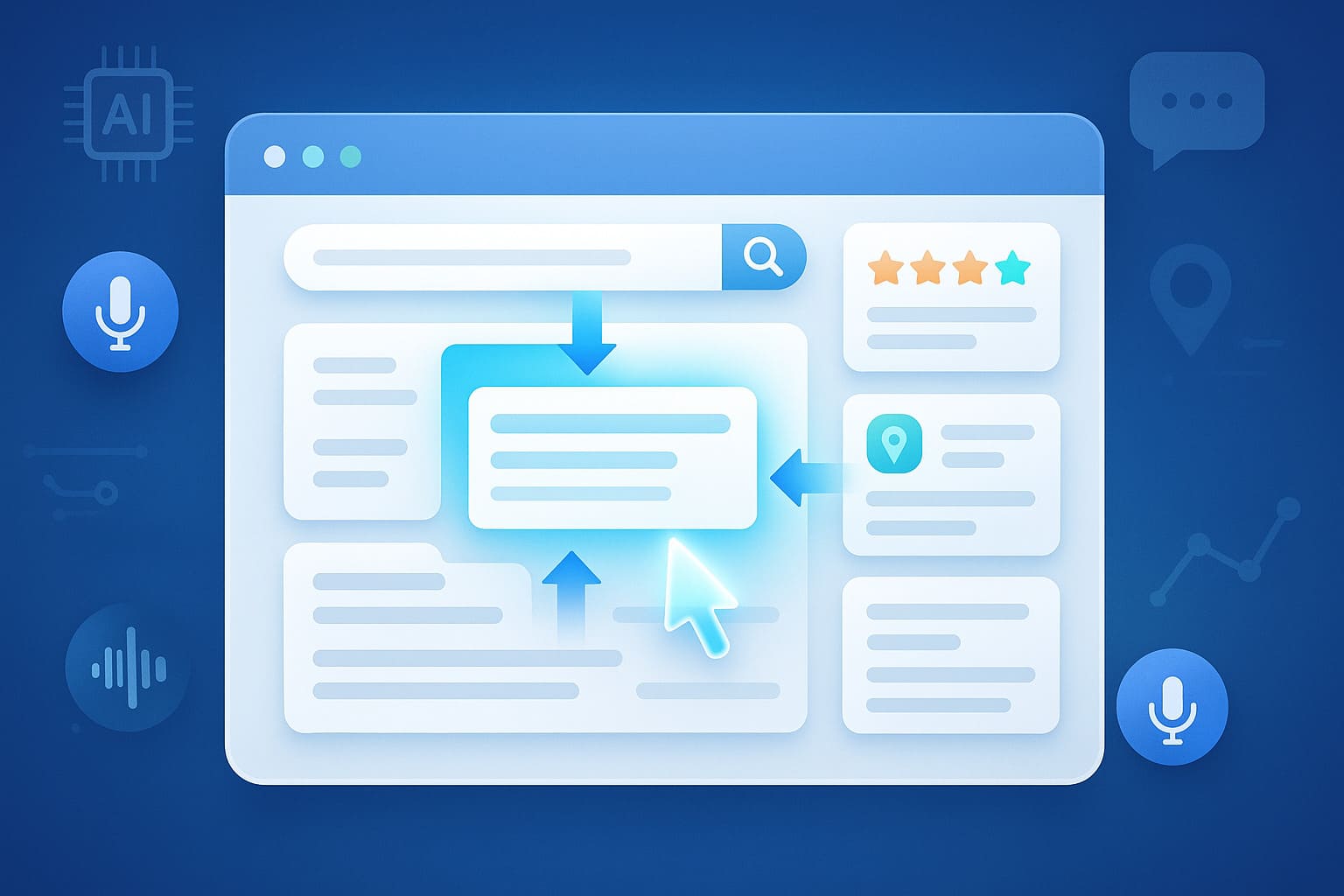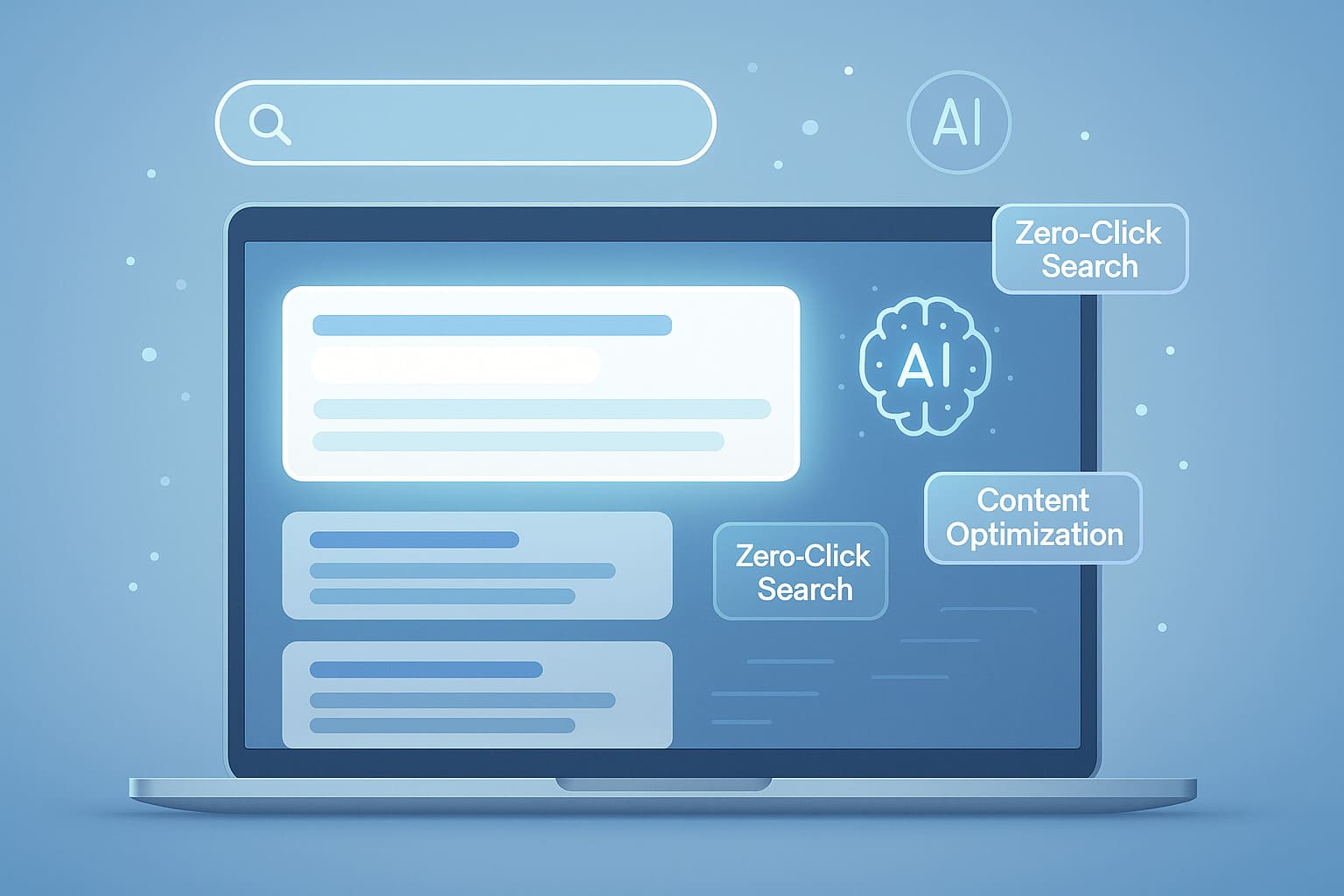A website needs the right setup to rank high. Search engines like Google use smart AI to show the best pages. Generative Engine Optimization (GEO) helps AI understand your content. It makes sure your website is clear and useful.
GEO is like giving clear road signs to AI. It tells search engines what your page is about. A well-optimized site ranks better and reaches more people. Without GEO, AI may not understand your content well.
In this guide, you will learn simple steps. You will see how to make your website AI-friendly. You will also learn how to organize pages the right way. This will help both search engines and users.
A good website is easy to read and navigate. It must answer questions fast and be simple to use. You do not need tricky words or long sentences. Clear and helpful content always works best.
Let’s start and make your website better for AI.
What is Generative Engine Optimization (GEO)?
Generative Engine Optimization (GEO) helps websites rank in AI search. It makes content easy for AI to read. AI search engines work differently from Google’s old system. They do not just match words with searches. They understand meaning and context.
GEO is not only about keywords and links. It helps AI see how useful and clear content is. AI ranks pages that answer questions the best. Websites with easy-to-read content do well in AI search.
Traditional SEO focused on keywords and backlinks. GEO focuses on clear answers and smart structure. AI looks at how content is written, not just words used. Good GEO content is simple and helpful.
AI reads content like a human understands a book. It looks for clear headings, short sentences, and facts. AI ignores confusing words and long, unclear text.
A well-optimized website ranks higher in AI search. Good GEO means better content for both people and AI. Websites with simple and structured pages get more traffic.
9 Steps to Optimize Your Website for GEO
A well-optimized website helps AI find useful content. Generative Engine Optimization (GEO) makes your site easy to understand. It boosts your rankings and improves user experience.
Let’s take a look at 9 steps to optimize your website for GEO and improve your online presence.
Step 1: Understand What Users Want (User Intent)
A good website gives people the answers they need. Think about what questions they ask online. Your content should have clear and simple answers. If your website does not help, they will leave.
Think Like Your Audience
Before writing content, ask yourself:
- What do people need help with?
- What questions do they type into search engines?
- What problem do they want to solve?
If someone searches “How to bake a cake,” they want simple steps. If they search “Why does cake collapse?”, they want a reason and a solution.
Your content must match the user’s goal. If you write about cakes but never explain how to bake one, your content will not help.
Write Clear and Simple Content
People do not like complex words or long explanations. Write short sentences that get to the point. A 5th grader should understand what you write.
❌ “Utilize an optimal approach to enhance ranking visibility.”
✔️ “Make your website easy to find on Google.”
The second sentence is clear and easy to understand. It says the same thing but in a better way.
Use “How-to” and “Why” Content
People often search for how to do something or why something happens. Your website must answer these searches.
- How to fix a slow website → Explain steps to speed it up.
- Why does my site rank low? → List reasons and solutions.
Write guides, tutorials, and FAQs to answer these questions. AI search engines prefer content that explains things clearly and directly.
Use the Right Words (Semantic Keywords)
AI does not just match exact keywords. It understands the meaning behind words. Use related terms to make content stronger.
If someone searches “best running shoes,” AI also looks for:
- Comfortable sports shoes
- Shoes for running long distances
- Lightweight jogging sneakers
Using different words for the same topic helps AI understand your content better.
To optimize for GEO, focus on user needs. Write clear, direct answers in simple language. Use semantic keywords to help AI understand your topic.
Step 2: Use Structured Data to Help AI Understand Your Website
A website needs to be easy for AI to read. Search engines do not just look at words. They try to understand what your content is about.
Structured data helps AI make sense of your website. It organizes your content so search engines can display it better.
AI ranks websites that are clear and well-organized. Without structured data, AI might not fully understand your page. This can make your site rank lower.
How to Use Structured Data for GEO?
Use structured data to organize information like:
- Articles → Helps AI understand headlines, authors, and publication dates.
- Products → Shows price, reviews, and availability in search results.
- FAQs → Displays questions and answers directly in search.
- How-To Schema → Helps AI show step-by-step instructions in search results.
- WebPage → Defines the overall structure of a page, helping AI categorize content.
- Events → Highlights date, location, and ticket prices.
For example, if your website explains “How to tie a tie,” adding structured data can help AI display the steps clearly in search results:
- Step 1: Cross the wide end over the narrow end.
- Step 2: Bring it through the loop.
- Step 3: Pull tight and adjust.
Structured data helps AI understand your website better. It improves search rankings and makes content more visible. If you want more traffic, use structured data to organize your content and help AI display it the right way.
Step 3: Create High-Quality, Helpful Content
A good website gives users the right information. AI search engines rank pages that provide clear, useful, and well-structured content.
AI looks for answers, facts, and clear explanations. It understands content like a human reads a book. If your content is confusing, AI will not show it in search results. Websites with helpful and well-structured content get better rankings.
Instead of writing “Optimize digital assets for improved visibility,” say “Make your website easy to find.” The second sentence is clear and direct. Users and AI prefer simple language that is easy to scan.
If someone searches “How to speed up a website?” They want quick steps, not long introductions. Websites that answer questions early rank better in AI search results. AI also prefers structured content with clear sections.
Be Clear and Direct
- Use simple words that are easy to understand.
- Write short sentences that get to the point.
- Avoid complex terms that make reading hard.
Answer User Questions Quickly
- Give the answer in the first few sentences.
- Do not make users scroll to find information.
- Use examples to explain concepts better.
Use a Logical Structure
- Organize content into clear sections with headings.
- Use questions like What, Why, and How to guide users.
- Keep related topics together for easy reading.
Optimize for Readability
- Use short paragraphs to improve flow.
- Avoid long blocks of text that are hard to scan.
- Format key points in lists for better clarity.
Websites that follow these steps are easier to read and rank higher in AI search results.
Step 4: Smart Keyword Optimization (Without Overdoing It)
Keywords help search engines understand what your page is about. AI does not just match words. It looks at meaning, context, and how well your content answers user questions. Using keywords wisely helps AI rank your site higher.
If someone searches “best running shoes,” AI also looks for phrases like “comfortable sports shoes” or “lightweight jogging sneakers.” Using related words makes content stronger. Instead of repeating one keyword many times, use different but similar words. This helps AI understand your topic better.
Use Natural Keywords
- Place keywords where they make sense.
- Do not add unnecessary words just to fit a keyword.
- AI prefers readable, user-friendly content over keyword-stuffed text.
Example: Instead of “Buy cheap smartphones online best price,” write “Find the best deals on smartphones online.”
Include Long-Tail Keywords
- Use phrases people type when searching.
- Example: Instead of “shoes,” use “best shoes for long runs.”
- Long-tail keywords match detailed searches and improve rankings.
- AI recognizes different ways users search for the same thing.
Use Keywords in the Right Places
- Add them in headings and subheadings to help AI scan content.
- Place a primary keyword in the first paragraph to set the topic.
- Use them in image descriptions and alt text for better indexing.
- Include them in meta descriptions to improve search appearance.
Avoid Keyword Stuffing
- Do not repeat the same word too much.
- AI can detect overused keywords and may rank your page lower.
- Write naturally, keeping content clear and helpful.
Example: Instead of “Best SEO tips for SEO ranking with SEO techniques,” write “Learn effective SEO techniques to improve rankings.”
Using the right words in the right way makes content easier for AI to read. When AI understands your page, it ranks higher in search results.
Step 5: Improve Website Structure & Internal Links
A well-structured website helps both users and AI understand content better. AI follows links to find and rank pages. A messy website with broken links or confusing navigation lowers rankings. A clear structure makes your site easy to explore and improves search rankings.
Organize Your Website Properly
- Use a simple layout with clear categories and subcategories.
- Group related pages under the right sections.
- Example: A shoe store should have separate sections for running shoes, formal shoes, and kids’ shoes.
Use Internal Links Smartly
- Link related pages to guide users and AI.
- Example: A blog on “Best Running Shoes” should link to “How to Choose the Right Running Shoes.”
- Avoid linking to unrelated pages, as AI sees this as poor structure.
Create a Logical Navigation Menu
- Keep menus simple with only necessary links.
- Example: Instead of “Home → About Us → Services → Blog → Contact,” use “Home → Services → Blog → Contact.”
- Do not overload users with too many choices.
Use a Sitemap to Help AI
- A sitemap tells AI how your website is structured.
- It helps search engines index pages faster.
- Use Google Search Console to submit your sitemap for better rankings.
Avoid Broken Links
- Check and fix links that do not work.
- Use tools like Google Search Console to find errors.
- Broken links confuse AI and lower rankings.
A well-structured website improves both user experience and AI ranking. When pages are easy to find and linked properly, search engines rank them higher.
Step 6: Use Credible Sources & Expert Opinions (Citations)
A website with trustworthy and well-supported content ranks higher in AI search results. AI looks for facts, expert opinions, and reliable sources.
If your content is outdated, vague, or incorrect, AI may not rank it. Adding accurate information from credible sources builds authority and improves rankings.
Cite Reliable Sources
Using data from trusted organizations makes your content more valuable. AI recognizes sources like government websites, universities, and industry leaders.
Instead of saying, “SEO is important,” say, “According to Google, 53% of website traffic comes from search engines” and link to the source. AI favors well-researched and fact-based content over opinions.
Quote Experts to Build Authority
Expert opinions make content more reliable and engaging. If you write about digital marketing trends, quoting a Google SEO specialist adds credibility. AI detects expert-backed information and boosts rankings for well-supported content. Users also trust expert advice more than general opinions.
Keep Information Up to Date
Search engines prefer fresh content. Using old studies or outdated reports lowers credibility. If an SEO guide cites ranking tips from 2015, it will not rank well today. AI favors content with recent data, new trends, and updated insights. Keeping content fresh ensures better visibility.
Link to High-Quality Websites
AI checks the quality of your external links. Linking to trusted websites improves your content’s authority. A fitness blog should link to health studies, not random blogs.
AI detects spammy or irrelevant links, which may hurt rankings. Always choose reputable sources that support your content.
Use Internal References When Possible
Internal linking helps AI understand website structure. If you write about SEO for beginners, linking to a keyword research guide adds value.
This not only improves rankings but also keeps users engaged. AI sees strong internal links as a sign of well-organized content.
A website with credible sources, expert opinions, and well-researched data ranks better. AI trusts clear, fact-checked information and rewards it with higher visibility.
Always use reliable sources to make your content stronger and more authoritative.
Step 7: Add Multimedia (Images, Videos, Infographics)
AI ranks websites higher when they include engaging and informative multimedia. Images, videos, and infographics improve user experience and help AI understand content better. Pages with relevant visuals keep users engaged longer, reducing bounce rates and improving rankings.
Use High-Quality Images
Images make content easier to understand and more engaging. A page with relevant visuals helps users process information quickly.
AI also scans images to understand page content. If writing about website speed optimization, include a before-and-after speed test screenshot to show improvement.
Best Practices for Using Images:
- Use relevant visuals that match your content.
- Add alt text to help AI and visually impaired users.
- Optimize images for fast loading without losing quality.
- Use graphs or charts to simplify complex data.
Include Videos for Better Engagement
Videos keep users on your page longer, improving rankings. A step-by-step tutorial on SEO performs better as a video than just text.
AI prioritizes content that keeps users engaged. If writing about keyword research, a short demo video on finding keywords improves user experience.
Best Practices for Using Videos:
- Keep videos short and focused on solving a problem.
- Add transcripts so AI can read and rank video content.
- Host videos on fast platforms like YouTube or Vimeo.
- Place videos in related content for better engagement.
Use Infographics to Simplify Complex Topics
Infographics present information visually, making it easier to understand. They combine text, icons, and charts to summarize data in a quick and engaging way. If writing about SEO trends, an infographic comparing past and present ranking factors improves readability.
Best Practices for Using Infographics:
- Keep designs simple and easy to read.
- Use clear labels for data points.
- Optimize file size for fast loading.
- Include a short description with keywords to help AI understand the image.
Adding images, videos, and infographics makes content more engaging for users and easier for AI to rank.
Step 8: Ensure Accessibility (Make Your Site Easy for Everyone to Use)
A website should be easy to use for all visitors, including those with disabilities. AI favors pages that follow accessibility best practices because they improve the user experience. If a site is hard to navigate, users leave, and rankings drop.
For example, a website with small text and poor color contrast is difficult for visually impaired users. Instead, using larger fonts and high-contrast colors makes content readable for everyone. AI detects accessibility improvements and ranks well-optimized sites higher.
Best Practices for Website Accessibility:
- Use alt text for images so visually impaired users understand content.
- Ensure text is easy to read with clear fonts and proper spacing.
- Use high-contrast colors to help users with vision difficulties.
- Make your site mobile-friendly for all screen sizes.
- Add keyboard navigation support so users can browse without a mouse.
An accessible website improves user experience, engagement, and search rankings. AI prioritizes sites that make information easy to access for everyone.
Step 9: Optimize Your Robots.txt for AI Crawling
A robots.txt file helps AI and search engines understand which pages to crawl and which to ignore. It plays a crucial role in Generative Engine Optimization (GEO) by guiding AI bots to focus on important content while avoiding unnecessary files. A properly configured robots.txt file improves indexing, prevents errors, and enhances your site’s ranking.
For example, if your website has a blog and an admin panel, you want AI to crawl and index the blog while blocking access to the admin area. A robots.txt file lets you allow or disallow specific sections. If done incorrectly, AI may ignore key pages or crawl duplicate content, which can harm rankings.
Best Practices for Optimizing Robots.txt
- Create a robots.txt file using a plain text editor and place it in your website’s root directory.
- Allow important pages like your homepage, blog, and product pages for proper indexing.
- Disallow unnecessary files such as admin panels, private data, or duplicate content.
- Use User-Agent rules to apply specific settings for different AI bots like Googlebot and Bingbot.
- Submit an XML sitemap to guide AI to the most important pages.
- Test robots.txt settings using Google Search Console to avoid blocking essential pages.
- Update robots.txt regularly as your website structure changes.
A well-optimized robots.txt file ensures AI crawlers focus on valuable content while avoiding irrelevant or sensitive pages. This improves search rankings, enhances site efficiency, and boosts user experience.
How Generative AI Affects Search Rankings
AI search engines do more than list websites. They scan content and create direct answers. People ask questions, and AI picks the best response. It finds the most useful and clear information.
Websites with simple and well-structured content rank better. AI looks for facts, short sentences, and easy words. It ignores confusing and unclear pages.
Trust is key in AI search rankings. Websites with correct and useful content rank higher. AI checks if content comes from real and expert sources.
Good formatting helps AI read pages faster. Headings, bullet points, and clear sections improve ranking. Websites that follow these rules get more visitors.
GEO & Local SEO: How to Rank Locally in AI Search
Local SEO helps businesses show up in AI-powered local searches. Generative Engine Optimization (GEO) makes AI understand your business location and services. A well-optimized site helps customers find you in local search results.
For example, if someone searches “best pizza near me,” AI looks for business listings, customer reviews, and location keywords. If a pizza shop has no local SEO, AI may not show it in search results.
How to Rank in Local AI Search:
- Set Up Google My Business (GMB) – Add your business name, address, and phone number.
- Use Local Keywords – Add city or neighborhood names in content and titles.
- Encourage Customer Reviews – AI ranks businesses with good reviews higher.
- Use Structured Data – Add LocalBusiness schema to help AI find your business.
- List in Local Directories – Add your site to Yelp, Bing Places, and industry directories.
- Optimize for Mobile – Most local searches come from phones, so pages must load fast.
- Create Location-Specific Pages – If you serve many areas, make separate pages for each location.
A strong GEO and Local SEO strategy makes AI understand where you are and what you offer. This helps more local customers find your business online.
How is GEO different from traditional SEO?
Why is GEO important for AI-powered search engines?
How can I make my website AI-friendly?
Why is structured data important for GEO?
How does GEO help local SEO?
How can I use keywords without over stuffing?
Why is internal linking important for GEO?
Conclusion
Generative Engine Optimization (GEO) helps websites rank better in AI-powered search engines. Clear content, structured data, and a user-friendly design improve AI visibility. Focusing on quality, trust, and user experience ensures long-term success. Businesses that adapt to GEO now will stay ahead in search rankings and reach more users.






